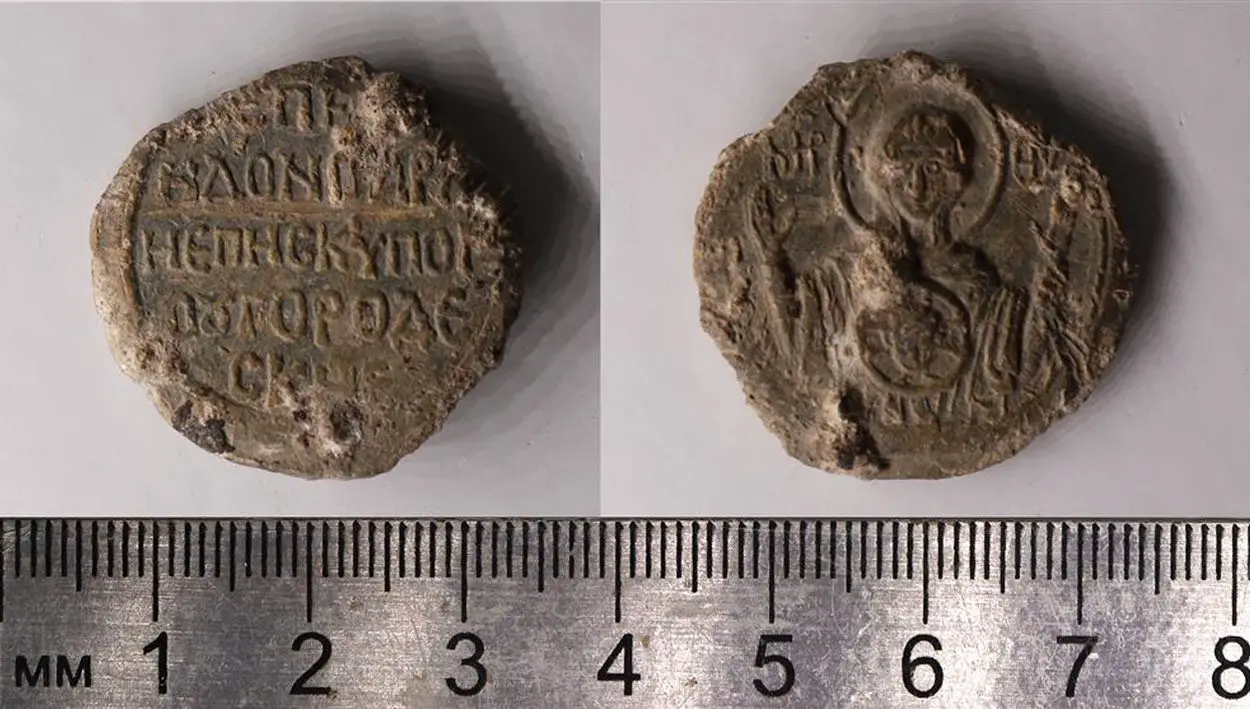Archaeologists from the Institute of Archaeology of the Russian Academy of Sciences have uncovered a seal of the Archbishop of Novgorod Spiridon during excavations at St. George’s (Yuriev) Monastery.
St. George’s (Yuriev) Monastery was an important religious centre of the Novgorod Republic, a medieval state that existed from the 12th to 15th century AD and stretched from the Gulf of Finland in the west to the northern Ural Mountains in the east.
The monastery is situated on the banks of the Volkhov River in Russia’s Novgorodskaya oblast, where today it is recognised as a world heritage site for Orthodox spirituality and Russian architecture. The site is also an important source for historical information on medieval Novgorod, as part of the Novgorod First Chronicle (the Synodal text) was compiled in the monastery.
Recent excavations in the monastic layers have led to the discovery of a residential building that dates from the 13th to 15th century AD. The structure appears to have been burnt during several phases of destruction, but in the upper layers, a lead hanging seal used to fasten important documents was uncovered, the fifth example of a seal discovered during ten years of archaeological research of the site.

Upon closer inspection, it was revealed that the seal bears the name of the Archbishop of Novgorod Spiridon (1229-1249), who ruled the Novgorod diocese during the Tatar-Mongol invasion of Rus’ in the mid-13th century AD. Most Rus’ principalities were forced to submit to Mongol rule and became vassals of the Golden Horde, however, the Novgorod Republic resisted and maintained their independence.
On one side of the seal there is an inscription in five lines with the name of Spiridon, Archbishop of Novgorod, and on the other side is a depiction of Mary, which in the Eastern and Oriental Orthodox, Church of the East, Catholic, Anglican, and Lutheran churches, describe her as the Mother of God.
Institute of Archaeology of the Russian Academy of Sciences
Header Image Credit : Institute of Archaeology of the Russian Academy of Sciences

